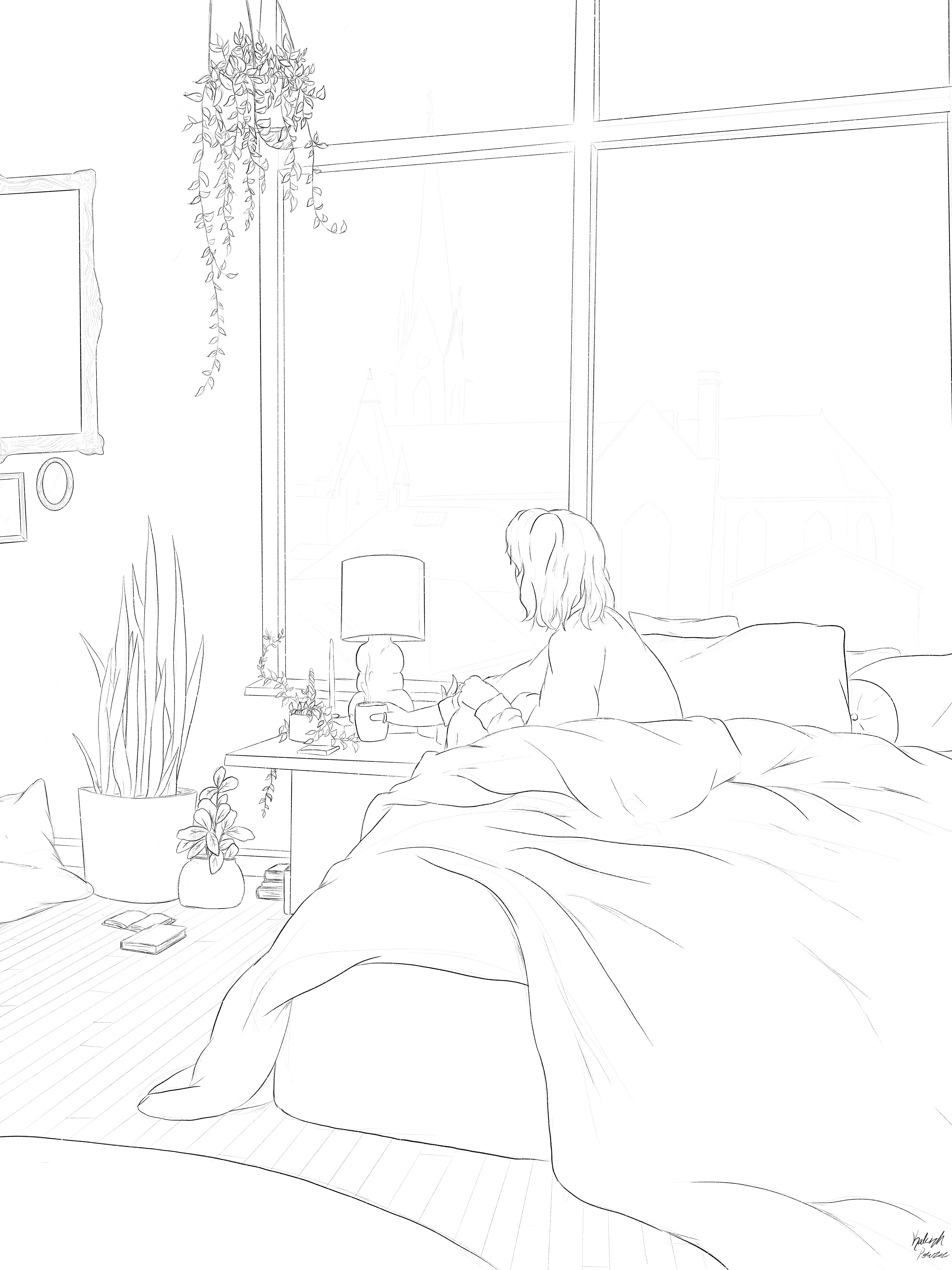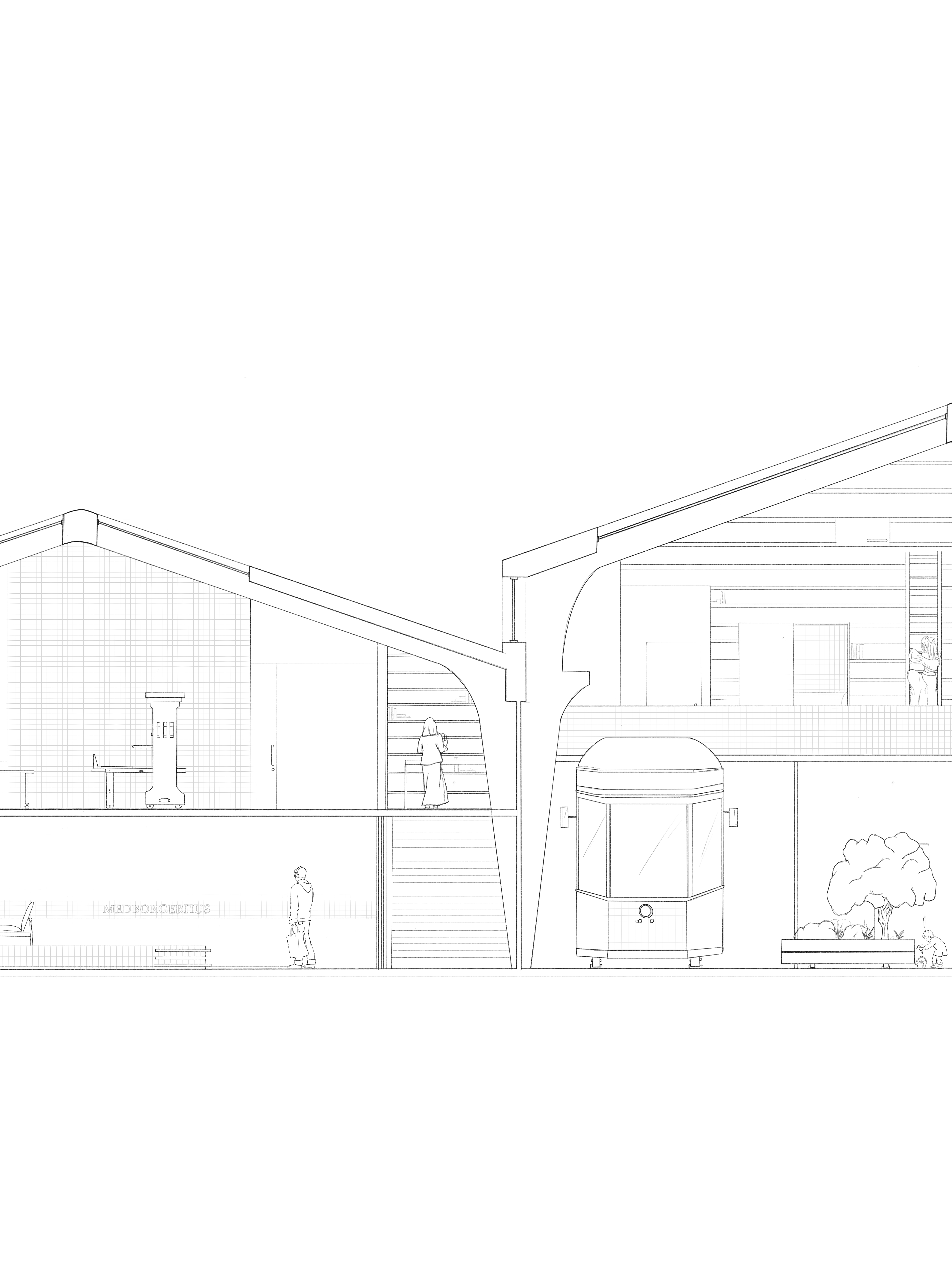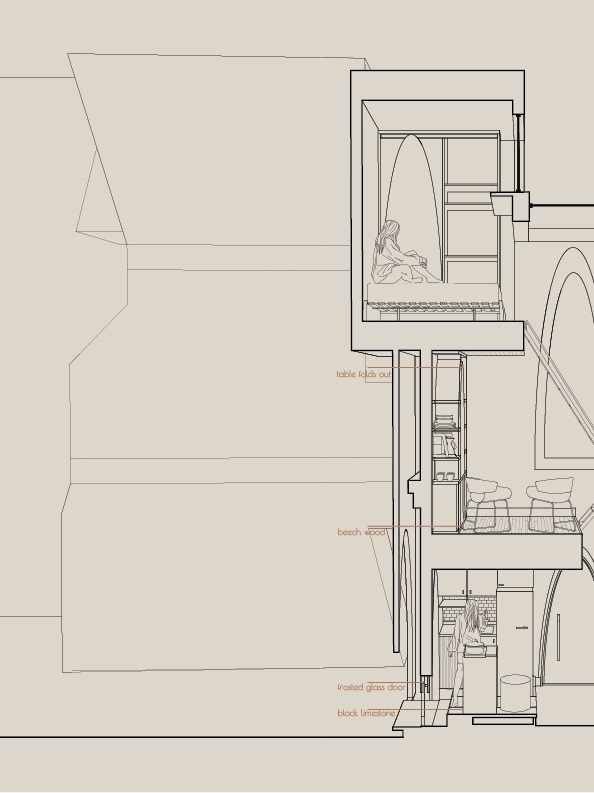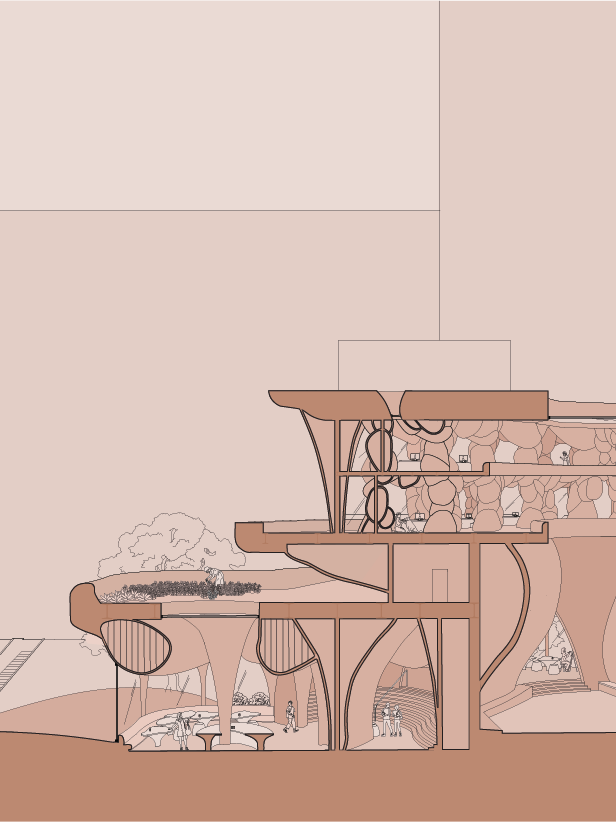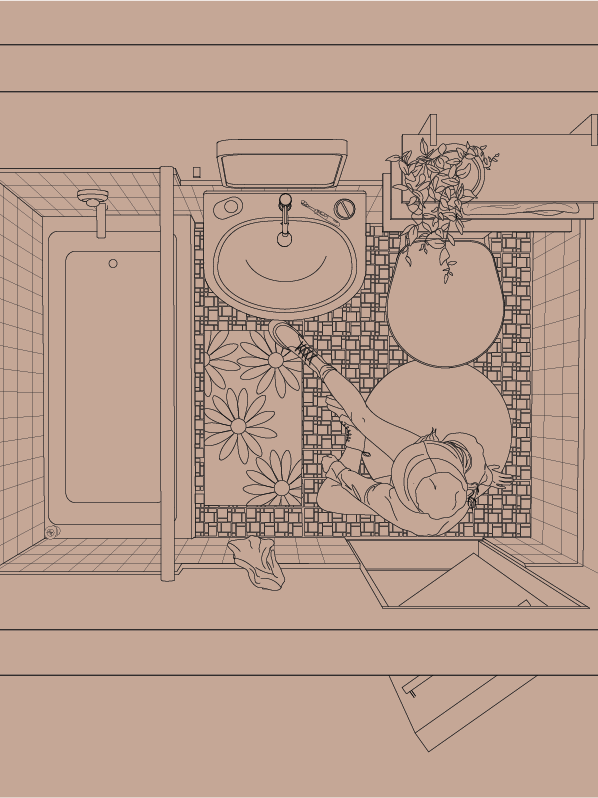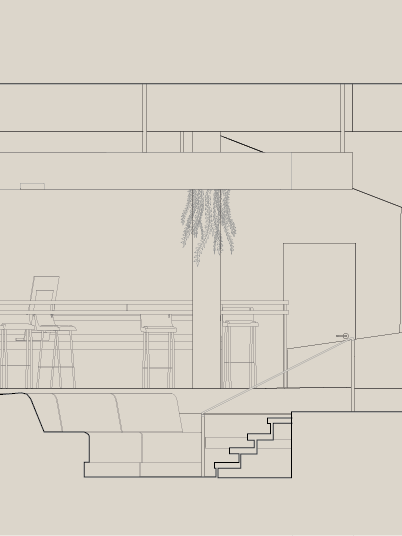This project is a restaurant and bar that brings to light traditional gender roles through the lens of the formerly ideal 1950’s home. The ground floor of the Flatiron building in New York houses four spaces that tell the story of and hopefully break traditional gender roles that were set in the kitchen. The front half of the Flatiron building represents the public sphere, which historically is where men would work and cook. In this project, the narrative of the public sphere is shifted and it becomes a restaurant highlighting a variety of female professional chefs. Even though the strict gender roles are shifting and the lines are being blurred between gender binaries, there are only about 23% of professional chefs are women. This restaurant would give women light on a stage that in the past has not been open. The back half of the space houses three bar areas that represent the private or domestic sphere of the 1950s. There are two bars as well as a speakeasy. One of the bars is a space that reflects traditionally masculine elements. The space is modeled after a home office which is traditionally seen as the husband's space in the 1950's home. The materiality is darker and more textured than the other bar. The other bar represents the traditionally feminine space in the 1950’s home, the kitchen. Elements of the traditional kitchen are converted into a functional bar. For example, the burners on the stovetop now house blenders and an ice maker. The colors green and pink are mainly utilized in the space because those were the colors most often marketed toward women for kitchen items. Both of the bars have secret entrances to a speakeasy. The entrance from the traditionally masculine space is through a bookcase and the entrance from the traditionally feminine space is through a refrigerator. The speakeasy takes elements from the traditional feminine and masculine space to create a less traditional experience without set gender roles. This project uses traditional elements of what used to be the ideal 1950’s home to tell the story and break the idea of traditional gender roles within the kitchen.
Process
The project began with two months of research looking into the history of kitchens and how strict gender roles became integrated into the history of kitchens. Since the beginning of time, there have been set gender roles for cooking, food gathering, and the kitchen. For example, in the prehistoric era, men would leave the home to hunt and women would stay closer to the home to gather and care for children. The Victorian era was a time that set the “traditional roles” for men and women. In this time period, pamphlets and books such as “The Cult of True Womanhood” was printed telling that a woman’s place was in the private home and that a man’s was to be a breadwinner within the public eye. The 1950's continued using printed media to push traditional gender roles. Many 1950’s advertisements for kitchen appliances depicted nicely dressed women in pearls smiling as they cooked dinner for their husbands. The only advertisements from the 1950's depicting men cooking were when they were grilling, once again only when outside of the home. The printed media of the time even placed these gender roles on children. This research led to the creation of a set of collages that both told the story of gender roles in the kitchen and guided the direction of the project. (The images in the collages are from 1950-60's magazine advertisements.)
Ground Floor Plan
Ground Floor RCP
Restaurant
"Woman's World" Bar Axon

Speakeasy


